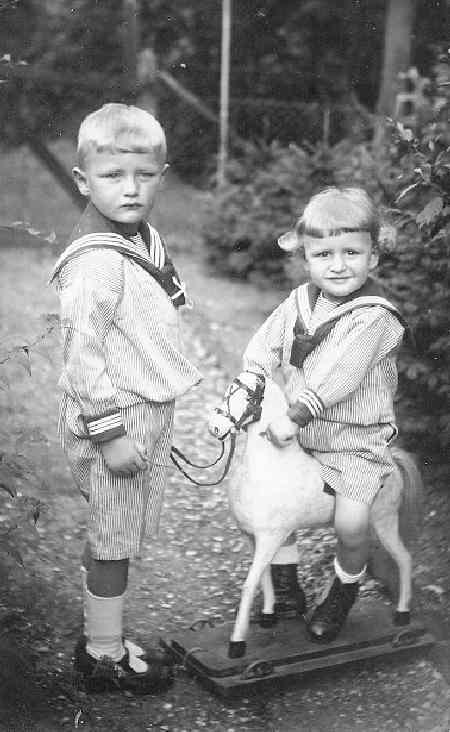
Figure 1.--These two German brothers, probably photographed in the 1920s, wear identical striped sailor suits. Note that the older brother wears strap shoes and the younger brother high-top shoes.


Figure 1.--These two German brothers, probably photographed in the 1920s, wear identical striped sailor suits. Note that the older brother wears strap shoes and the younger brother high-top shoes. |
The popularity of sandals, strap shoes, and low cut shoes have varied over time. Some parents simply liked the look of sandals, bit others felt them healthier as they
were more open to air. Other parents thought they did provide adequate support for younger children. Orthapedic advise also varied. As a result you sometimes see
younger children wearing strap shoes and in other occasions somewhat older children. Attitudes also varied from country to country. The school sandal (a kind of
"t"-strap shoe) was very popular in England. Across the channel in France boys wore both sandals and high-top shoes to school. In Germany the hgh-top shoes
were more common than sandals.
The popularity of sandals, strap shoes, and low cut shoes have varied over time. Fashion and style have been important factors. Another important consideration has been health and orthapedic factors.
Some parents simply liked the look of sandals. Fashion attitides have of ciurse varied over time and among countries. Scocial-economic factors have also affected fashion trends.
Some parents have perceived sandals and strap shoes as healthier then heavy shoes because they were more open to air.
Other parents thought they did provide adequate support for younger children. Orthapedic advise also varied.
Strap shoes are usually considered appropriate for younger childre--especially as far as boys are concerned. As a result of these differeing opinins and fashion trends, you sometimes see younger children wearing strap shoes and in other occasions somewhat older children. HBC has observed this trens in several different countries and over an extensive chronologiacl period.
Attitudes on these issues could vary significantly from country to country. The school sandal (a kind of "t"-strap shoe) was very popular in England. Across the Channel in France boys wore both sandals and high-top shoes to school. In Germany the hgh-top shoes
were more common than sandals.
An American reader reports, "When I was a child in the early and mid-1940s, infants and young children up to about 3 or 4 were kept in high top shoes. The "experts" told their
parents that young children needed the ankle support for walking, and that only as they get older should they be allowed to wear low-cut shoes such as oxfords, sandals, and strap shoes. I wore white high tops as a very young child and clunky brown ones (which I
hated) when I got a bit older. The various styles of low-top shoes -- oxfords, strap shoes, etc. -- were for children whose ankles had been strengthened by walking for a while.
Navigate the Boys' Historical Clothing Web Site:
[Return to Main sandal page]
[Introduction]
[Activities]
[Biographies]
[Chronology]
[Clothing styles]
[Countries]
[Bibliographies]
[Contributions]
[FAQs]
[Glossaries]
[Satellite sites]
[Tools]
[Boys' Clothing Home]
